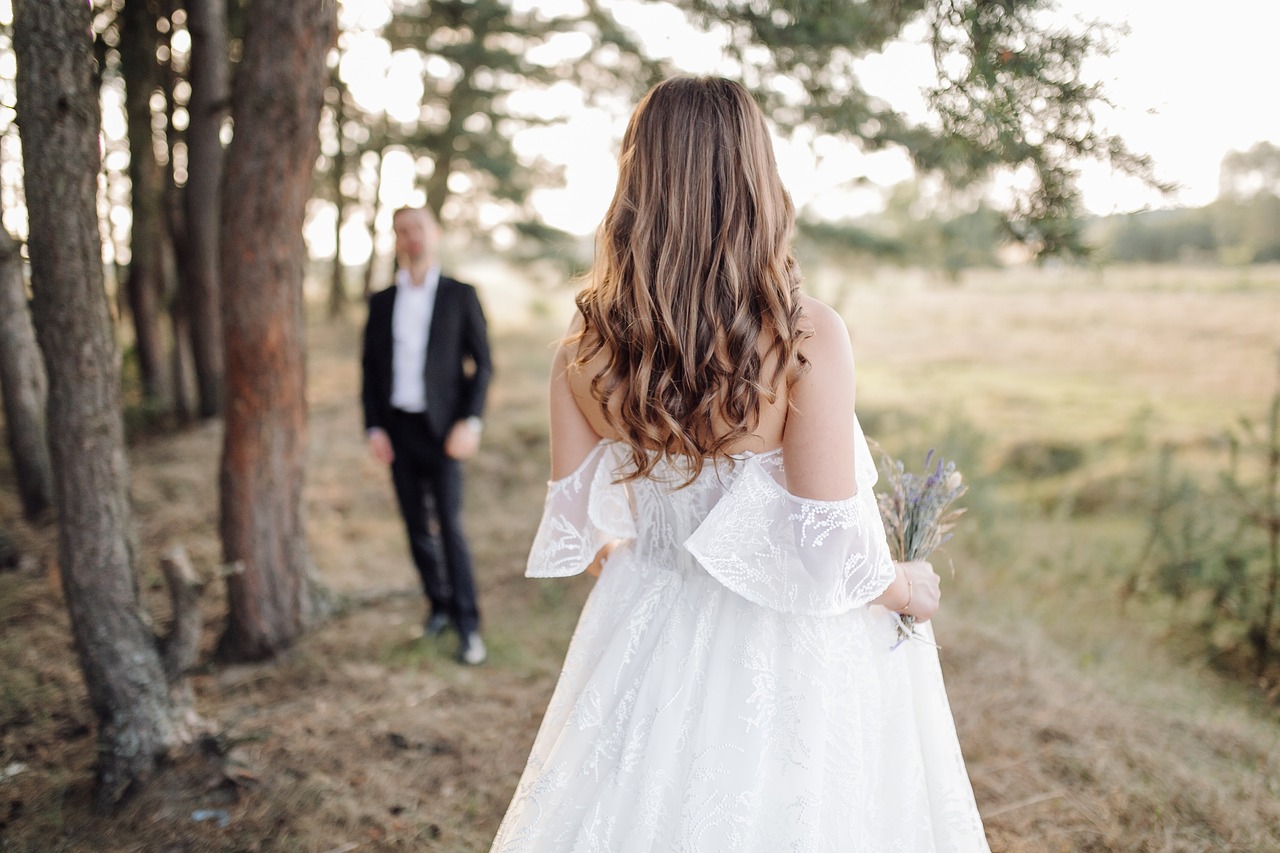
You’ve seen the aesthetic photos of romantic, picturesque weddings in the forest, in a garden, or by a waterfall, and you’ve made up your mind: you’re going to have an outdoor wedding. While these venues certainly have mother nature’s natural beauty on their side, they come with some unique challenges that you don’t see with indoor weddings. It may be daunting to think of all the variables the great outdoors may throw at you, but with some careful planning and a little bit of flexibility you can be ready for whatever circumstances come your way.
Have a Rain Plan

You spend so much time, energy, and money on making sure your wedding looks perfect, so the last thing you want is for everything to get ruined in a downpour. Whether you’re in front of a historic mansion or off the trail of a state park, having a rain plan is imperative. This may mean booking an additional indoor space on property, moving the ceremony to a covered patio or large gazebo, or having a tent on standby (for tips on tent rentals, check out our beginner’s guide). You want to stay dry during the ceremony and reception themselves, but also during the transition between them. Have a plan for how you will get to and from the covered areas without getting drenched, whether that be a personal golf cart or a cute umbrella. If your guest’s parking is more than a short walk from your ceremony or reception site, you may also consider assigning ushers to escort guests on golf cart or under umbrellas to your covered space. Your guests will appreciate your efforts to keep them dry and enjoy your ceremony all the more.
Say Goodbye to Bugs

One of the downsides of an outdoor wedding is the increased possibility of bugs. While there may not be a way to banish these unwanted guests from the ceremony for good, there are ways you can minimize their presence on your big day. When it comes to airborne bugs, your best line of defense is good airflow. Use fans around your reception and buffet areas to disrupt their flight and keep them away from guests and food. Keep any food covered while not being served using chafers or cloth covers. Roll top chafers are a great option for a buffet as they allow guests to easily roll the lid away while serving themselves and roll it back into place when they are finished. If you don’t like the look (or smell) of bug deterrent products like citronella candles, you can incorporate flowers into your bouquets and arrangements that bugs naturally avoid. Chrysanthemum, marigolds, and ageratum are natural mosquito deterrents, and flies are not a fan of the calming scent of lavender. If you are planning far enough ahead, visit your ceremony site around the same time of year as your upcoming wedding to get an idea of how prolific the bug population will be and plan your counterforce accordingly.
Account for Extreme Temperatures

While spring and fall may be the ideal seasons for outdoor weddings because of their mild temperatures and colorful flora, that doesn’t mean you can’t have an equally wonderful wedding in the winter or summer. You just have to account for the high or low temperature in your planning. For summer weddings, make sure there is plenty of shade available, and consider offering water to your guests before the ceremony as well as at the reception. You can even use the opportunity to be creative and offer paper or folding fans as guest favors. For winter weddings, utilize patio heaters or a heated tent, offer warm drinks at your reception, and consider giving out fleece blankets as favors that your guests can use at the ceremony and for years to come.
Don’t Get Blown Away

Some of the venues with the best views come with the trouble of persistent winds. If this sounds like your venue, plan ahead and put measures in place to keep everything from blowing away. Stake down disposable aisle runners with small tent pegs, and use decorative stones, sturdy vases, or heavy flower arrangements to keep cloth runners on the ground. Keep lighter decor in place with sand, small stone, or tape. For larger decor like arches, columns, or flower stands, use strong fishing wire and tent pegs to stake them to the ground. Use fitted tablecloths, or attach pennies or washers along the hem of draped tablecloths to keep them in place. If you’re using a tent, consider a strategically placed sidewall to block the wind.
Make Sure You Are Heard

When indoors, the walls of the building reflect sound around the room, helping you be heard. When outdoors, however, you are at danger of your soulfully written vows floating away on the wind. It’s no secret that the world outside can be much louder than in an insulated building. A passing car, a droning cicada, or a chattering bird can all distract from the sounds that matter most. To make sure you’re heard, consider renting a sound system. This could be as simple as a singular handheld microphone and speaker, or you can spring for lapel mics and surround sound. If all else fails, just remember to speak loudly and clearly so no one is left wondering what was said.
Don’t Forget Bathrooms

The one thing indoor venues have that an outdoor venue may not (besides walls and a roof) is a bathroom. While it is certainly not the most exciting thing to plan for your wedding, a readily accessible bathroom is one feature you don’t want to skip out on. Anywhere you have food and drinks being offered, you are inevitably going to have guests needing to relieve themselves. You never want to put yourself or your guest in a position where they have to cut the day short to leave and find a bathroom. If your venue does not have one onsite, consider renting porta potties or splurging on a bathroom trailer. Your guests will thank you.




